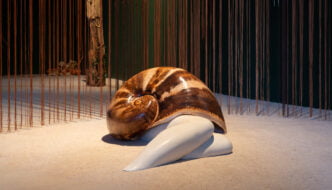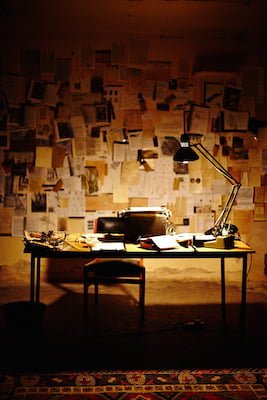Discovering your city through a brand new lens
December 12, 2014
‘If You Go Away’ by Invisible Flock – Chapter 1
As part of this year’s Compass Festival, TSOTA was invited to gain an insight into the first chapter of an exciting new project designed by Leeds-based art collective Invisible Flock. The team have created a brand new app that is deemed to be part game and part art-installation entitled ‘If You Go Away’.
For those of you unaware of Invisible Flock, they are an organisation led by digital artist Ben Eaton, visual artist and developer Victoria Pratt and writer and director Richard Warburton. Often using technology, their work tends to incite audiences to take part in experiences and projects through interaction. Past projects have included ‘Bring Me The Happy’ and ‘Sea Of Voice’ which was launched as part of Brighton Festival (read more in our interview with Invisible Flock back in June 2014). ‘If You Go Away’ is an episodic, location-based work. The first chapter was released to allow the artists to test the development of the app so far, on an audience.
The app itself has been developed with the idea that you, as a ‘player’, will have ownership over the experience of using it. Without giving too much away, the app works as an interactive map which allows you to witness the city you are based in, in a new, cinematic way. The intention is to not only allow users to witness familiar surroundings via a brand new perspective of a fictional other, but also to give them the ability to create their own path. There is a loose narrative that can be followed but players are left to make their own choices within the narrative through a text-based dialogue – which has the ability to conduct a unique experience each time. Below is the trailer released by Invisible Flock to give you a taster of what to expect:
After hearing the team talk about the development of the app, they were not shy to express the challenges this new app has brought them. The app is intended to utilise the player’s phone or tablet to be explored alongside the reality of the city. Using digital software platforms such as Unity, the team developed the software with the desire to feature a live element within the game. The conditions within the app mimic those in real life such as the weather and the time of day, but for the experienced developers this was not their biggest test. Instead, it was the barrier of language. As Richard stated during the press launch, “…language in the digital realm can be hard to negotiate as it is very dependent on the player’s own interpretation.” As technology becomes a large part of our everyday lives, we have become very reliant on signals, and tend to search for them within most digital platforms. Icons, prompts and instructions are universal on phones and tablets which humorously resulted in many first time users of the app, when instructed to “TURN”, to turn around on the spot, rather than turn their phone onto its side! It is challenges like this that the team were hoping to bring to light and reconsider by allowing the public to sample the app during Compass Festival.
‘…many first time users of the app, when instructed to “TURN”, turned around on the spot, rather than turn their phone onto its side!’
It’s safe to say after hearing about the work and development that had gone into the app, I could not wait to test it for myself. During the festival, members of the public were invited to go to a station set up in Everyman Cinema to have an hour sample of the app downloaded onto their phones, or to borrow one of the team’s stock. Plugging in my headphones, I decided to test the app at dawn, suggested to be the best time to test-run it by the team themselves. It soon became clear why. Now, in no way do I want to ruin the experience for you, so I shall keep event details under wraps, but I will go into a little detail of my own participation. Because the app is very focused on using the phone as a space of its own, a lot of attention is directed on your phone screen. At first this can be slightly problematic as you get used to working the app, mainly because you are walking around with your head down – leaving very little attention to focus on the people around you, if there are any. However, once I got used to navigating myself around the interactive map, and with a bit more conscious consideration to my surroundings, I was transported to an alternative world. I witnessed focal points throughout the centre of Leeds through a different lens all accompanied by binaural soundscapes. It’s fair to say I was completely mesmerised.
This is an app quite like no other I have tried before and I am eagerly awaiting the next chapter in its development. The definitive version of this app is set to release Summer 2015 and The State of the Arts is set to bring you all the updates throughout its development, so watch this space.
Chloe Patrickson
www.invisibleflock.co.uk @invisibleflock




Comments